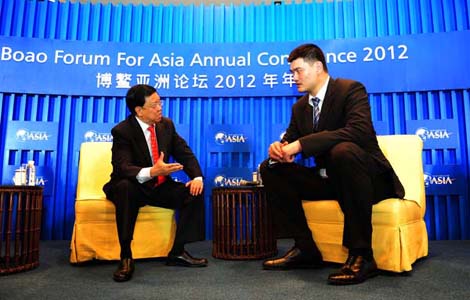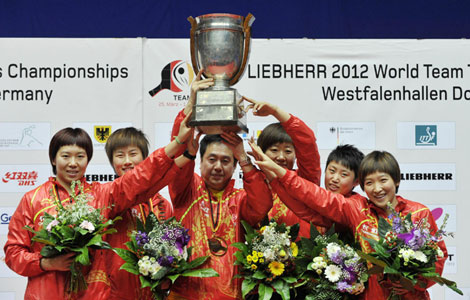 |
|
|
|
|||||||||
BOAO, Hainan - Asian countries should further tap the potential of both their domestic markets and Asia's regional market to achieve sustainable growth, as the world economy still needs time to fully recover, said Chinese Vice Premier Li Keqiang on Monday.
"We should promote internal drivers of growth. This is the new trend for open economic development in Asia," Li said while delivering the keynote speech at the opening ceremony of the 2012 annual meeting of the Boao Forum for Asia (BFA).
Asia has its unique advantages in seeking internal drivers of growth as it is home to around 45 percent of the world's population, Li said.
The three-day forum started on Sunday in Boao, a scenic town on the eastern coast of China's southernmost island province, Hainan.
Seeking "Internal drivers of growth"
Achieving full global recovery will remain a long and arduous process, as the impact of the global financial crisis still exists and the debt crisis in Europe persists, Li said.
Asia, a region that hosts more emerging economies than any other part of the world, has been the first to recover. Its combined GDP now accounts for over 30 percent of the world's total. Its contribution to global growth also surpasses 30 percent, said the vice premier.
However, the global financial crisis has unmasked Asia's weakness.
Asian economies mostly stay at the upper reaches of the global supply chain and focused on manufacturing and exports, which means too much reliance on global demand, said Wei Jiafu, chairman of China's biggest shipping company COSCO.
Facing uncertainties in the world economy, Asian countries need to seek healthier, more sustainable ways for economic development. They should restructure and upgrade their industries, and expand domestic demands both inside and among Asian countries, said Wei.
Most Asian countries are developing countries, which also gives them room to seek further growth, the vice premier said.
Asia also enjoys a remarkable edge in terms of human resources, he added, as it has the world's largest labor force and largest pool of engineers and scientific researchers.
While maintaining measured investment, Li continued, Asia should fully tap the potential of consumer spending, technological upgrading and improvement of labor skills.
Asian countries should be able to walk using both legs, said Singapore's Emeritus Senior Minister Goh Chok Tong, formerly Singapore's prime minister.
If global demands wither, internal drivers of growth will play an important role to support the economy, Goh said. More co-operation, trade and investment should be encouraged among Asian economies, he added.
In the keynote speech, the vice premier also urged Asian countries to remain open, both to the world and among its members, which he said was the key to the region's achievements in the past.
Countries in Asia should enhance their mutual trust, draw on each other's strengths, promote inclusive growth, and maintain communication and coordination on major international and regional issues, Li said.
"Intra-Asian trade has accounted for over half of Asian countries' total foreign trade, allowing them to reap handsome dividends for development," he said.
Asian countries need to further enhance their consultation, promote trade liberalization and oppose all forms of protectionism, he added.
"Openness and cooperation benefits all and leads to mutually beneficial progress," Li said.
However, he added that "the road toward development will not be smooth and there will be plenty of growing pains," as the overall level of development in many Asian countries is still quite low.
Significant development gaps continue between different Asian countries. Resource and environmental constraints are worsening.
However, Li said that by exploring internal drivers of growth, Asia's economy will be able to achieve robust, sustainable and balanced growth.

|

|

|

|

|

|